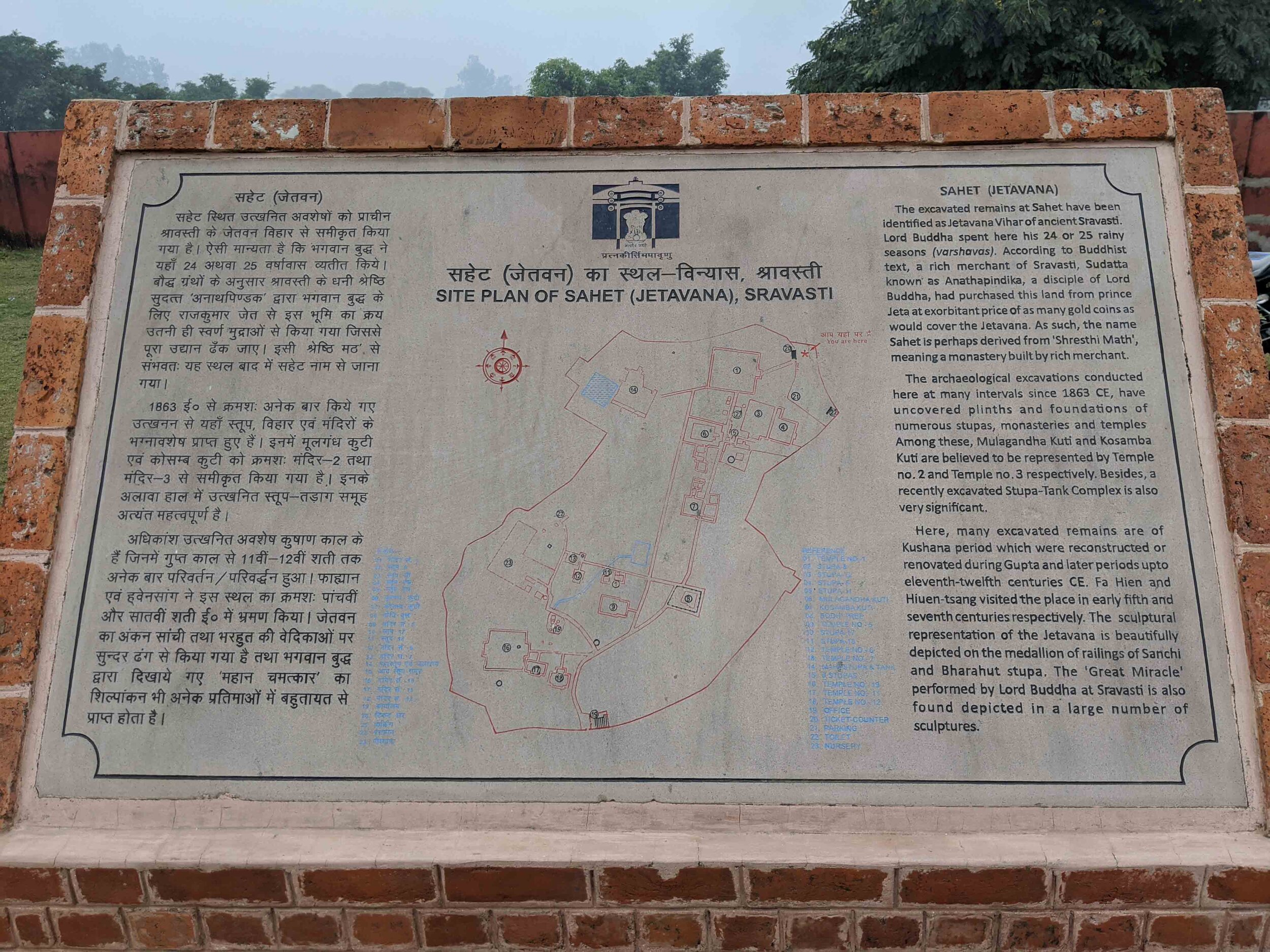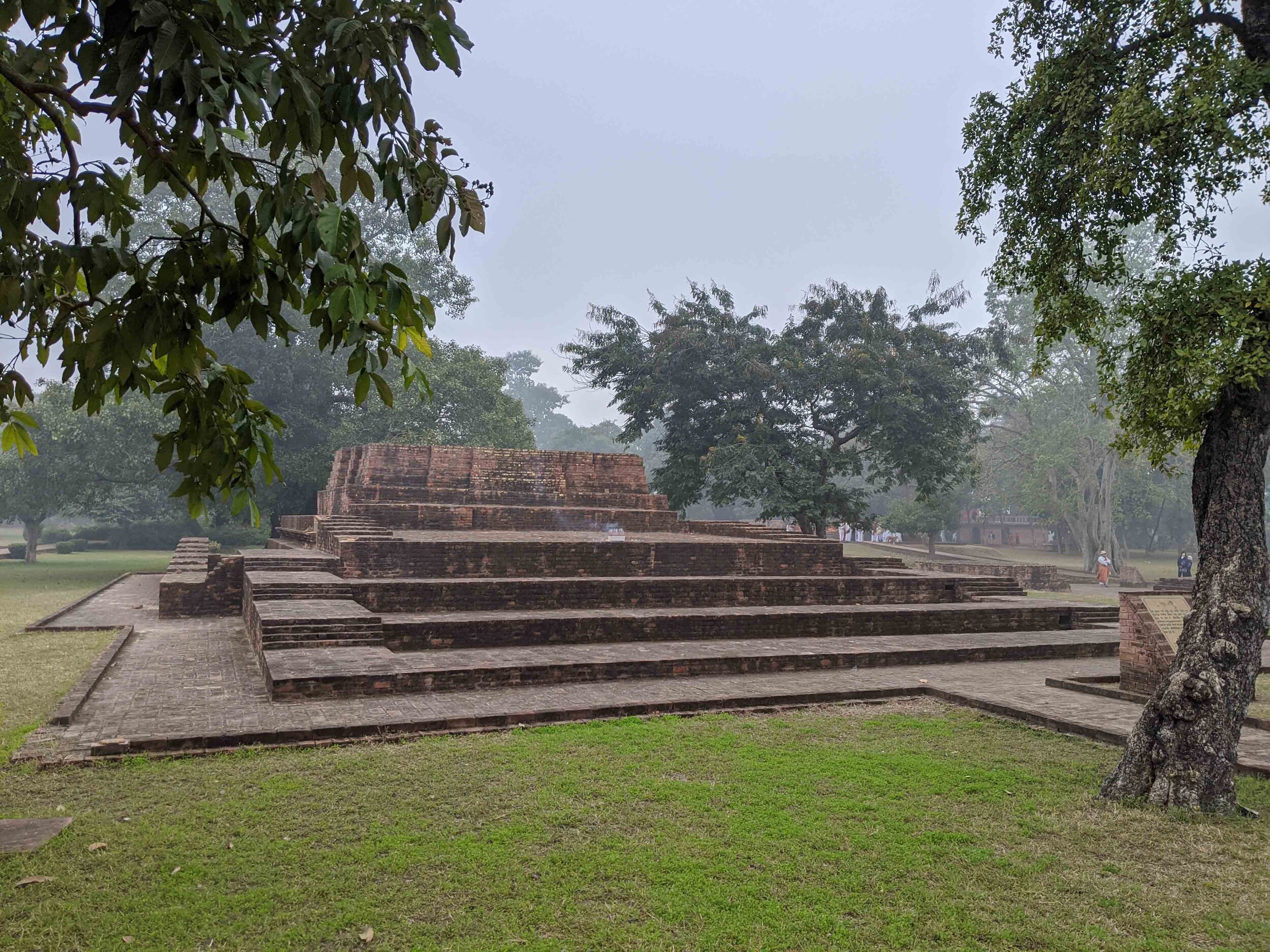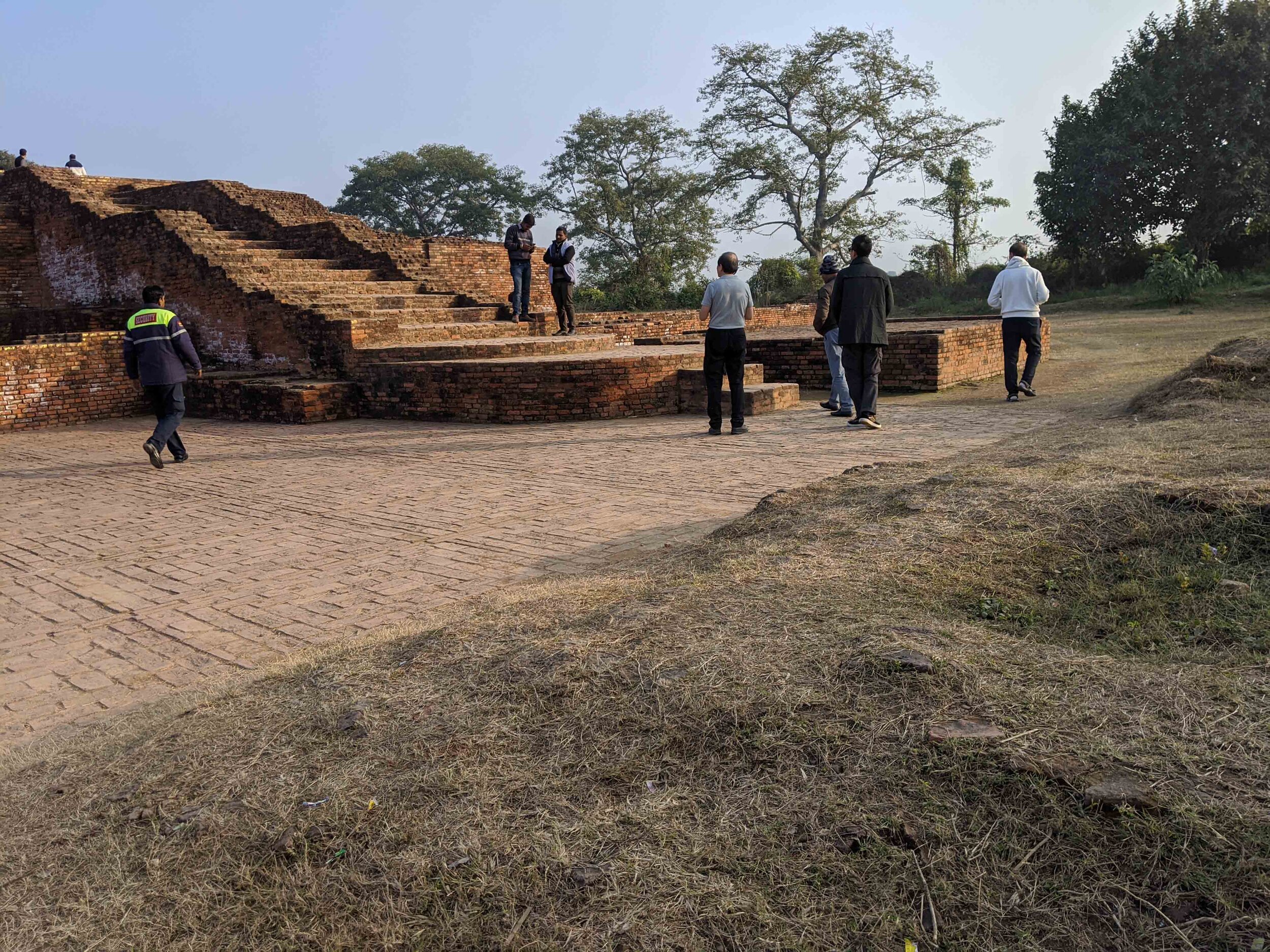Savatthi (Sravasti, Shravasti)
Savatthi was a city of ancient India and one of the six largest cities in India during the Buddha’s lifetime. In this area in present day, Uttar Pradesh, there are several important sites that have been identified.
This includes the Site of the “Twin Miracle”, as well as Jetavana (Jeta’s Grove), a monastery where the Buddha lived for a time. Savatthi was actually the Buddha’s hometown, and there are sites related to his earlier life as well.
Related historical sites in the area includes the house of Ananthapindika and Mogallana house
Site of the Twin Miracle, performed by the Buddha in Sravasti. Picture from the top of the Stupa/structure. Currently this place is locally known as Orajhar.
Site of the Twin Miracle
Savatthi is commonly identified as one of the Eight Great Places of Buddhism due to its association with the Site of the “Twin Miracle”.
At the time, the Buddha had been challenged by the doubtful and proud heretics. In response, the Buddha performed the Yamaka-pātihāriya (“Twin Miracle”), so called because it consisted in the appearance of phenomena of opposite character in pairs - e.g., producing flames from the upper part of the body and a stream of water from the lower, and then alternatively. Flames of fire and streams of water also proceeded alternatively from the right side of his body and from the left. From every pore of his body rays of six colours darted forth, upwards to the realm of Brahmā (leading deity or deva*) and downwards to the edge of the Cakkavāla (whole world system). The Miracle lasted for a long while, and as the Buddha walked up and down the jewelled terrace, he preached to the multitude from time to time. It is said that he performed miracles and preached sermons during sixteen days, according to the various dispositions of those present in the assembly.
At the conclusion of the Miracle, the Buddha, following the example of his predecessors, made his way, in three strides, to Tāvatimsa Heaven (second of the six deva-worlds*), there to preach the Abhidhamma Pitaka to his mother, now born as a devaputta.
*deva may refer to deity. See here.
References:
http://www.palikanon.com/english/pali_names/y/yamaka_paatihaariya.htm
Jetavana (Jeta’s Grove)
Jetavana was one of the most famous of the Buddhist monasteries or viharas in India (present-day Uttar Pradesh) The monastery was given to him by his chief male lay disciple, Anathapindika. Jetavana was the place where the Buddha gave the majority of his teachings and discourses, having stayed at Jetavana for about 20 vassas (annual three-month retreat), more than in any other monastery.
The entire site comprise of many smaller structures or temples, the holiest being those marking Gandhakuti and Kosambakuti where the Buddha resided. During the Buddha’s time, the structures are likely wooden. The brick structures have been erected on the sites in later years. The Jetavana park includes the residencies of Buddha’s major disciples as well as later but still ancient monasteries.

Here are some photos around Jetavana to provide some context of how the environment is like.









Where the Buddha Resided
(Gandhakuti and Kosambakuti)
Gandhakuti (Temple 2)
The ruins here mark the site of the Gandha-kuti (Perfumed Chamber) built by Anathapindika for the Buddha’s use. According to the commentaries, the site of the Buddha’s bed in it is the same for all Buddhas, irrespective of the size of the Gandha-kuti. The original Gandha-kuti was wooden but by the time the Chinese pilgrims saw it, the structure was a two-storeyed brick building in a ruinous condition. Now only the low walls and stone platform are extant. This is a favourite site for pilgrims to perform puja and meditate.
Source: http://buddhcharika.com/pilgrimage-buddhist/sravasti/
Kosambakuti (Temple 3)
This temple is believed to be the site of the original Kosambi kuti, also built by Anathapindika earlier for the Buddha’s use as a meditation room. Just in front of it is a long plinth, made of bricks, marking the site of the original promenade (cankama) used by the Buddha for walking meditation.
Source: http://buddhcharika.com/pilgrimage-buddhist/sravasti/
Gandhakuti (Temple 2) in the background and Kosambakuti (Temple 3) in the foreground
Where the Buddha would walk
This long brick structure is erected on the original promenade (chankama) used by the Buddha for his walk. It is just opposite Kosambakuti.
Gilded with gold leaves by pilgrims (2012)

Double stupa and Bodhi Tree
The Ananda Bodhi tree is located near the entrance of Jetavana. It was planted at the request of Anathapindika so that the laity would have an object to worship during the Buddha’s absence from Savatthi to propagate the Dhamma after each vassa. When Ven. Ananda reported the matter to the Buddha, the latter replied that there were three types of objects of veneration, namely: the corporeal relic deposited in a stupa after the Buddha’s Parinibbana, an object used by the Buddha such as his alms-bowl, etc. and a visible symbol such as a Dhammacakka wheel.
The first was not possible while the Buddha was alive, while the third object was not appropriate for those who were not content with a mere symbol or picture. So only the second remained and the Buddha suggested the Bodhi tree as the best object to venerate in his absence. So it was decided to plant a small shoot of the Bodhi tree from Bodhgaya and Ven. Moggallana, foremost in psychic ability, was assigned the task of obtaining the sapling. When it arrived, the young shoot was ceremoniously planted at the gate of Jetavana by Anathapindika. The tree grew and became an object of veneration to the laity. At the request of Ven Ananda, the Buddha spent one night meditating under it, adding sanctity to the tree. The present tree looks very old from its hoary appearance but it is not possible to confirm whether it is the original tree or a descendant of it.
Source: http://buddhcharika.com/pilgrimage-buddhist/sravasti/
Temple and monastery 19. One of the bigger temple compounds in Jetavana, many monks must have resided here at one time.
House of Ananthapindika
It is believed to have been built over the foundations of the house of Anathapindika also known as Sudatta. He was of the wealthiest merchant and bankers in Savatthi in the time of Gautama Buddha. He is considered to have been the chief male patron of the Buddha. Anathapindika bought most of the land of the Jetavana Monastery from Prince Jeta, to build a monastery for the Buddha.
Read more here.
































